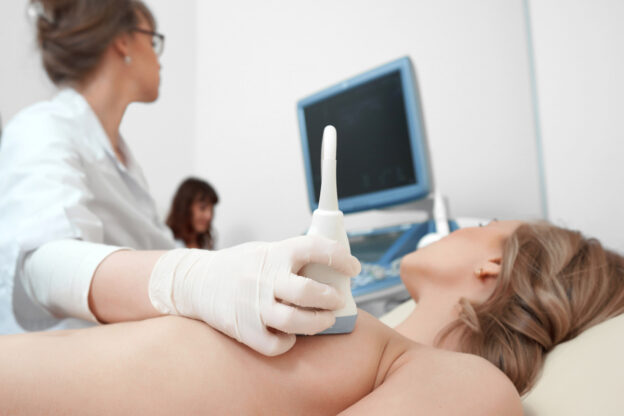How To Sleep After Breast Augmentation Surgery

Is cosmetic breast surgery in your future? Congratulations! Whether you’re having a breast augmentation, lift or reduction, you are on your way to having breasts that fit your self-image and lifestyle better. As you prepare for breast plastic surgery and recovery, make sure you don’t overlook this important fact: you’ll need to sleep on your back for the first couple of months after your procedure.
Why do I have to sleep on my back after breast surgery?
Sleeping on your back after breast augmentation is an absolute must to ensure that your results heal optimally. Until the capsule, or natural scar tissue that forms around the breast implant, has formed completely, the shape and position of your implants are vulnerable to external forces. This means the implants can be pushed into a position you don’t want!
Even if you aren’t getting implants, sleeping on your stomach or side too soon after any breast surgery can strain fresh incisions, possibly leading to bleeding or stretching of the healing scars. The excess pressure can also worsen swelling and discomfort, prolonging your recovery.
Sleeping on your back keeps your breasts in the best possible position for healing. In fact, Dr. Kirby recommends her Fort Worth breast augmentation, breast lift, and breast reduction patients sleep on their backs for at least 8 to 12 weeks after surgery.
Back sleeping has other benefits that make it worth a try even if your procedure is months down the road. Sleeping face-up helps your skin absorb products applied before bedtime better, helps avoid sleep-related facial wrinkles, can reduce morning under-eye puffiness, and can even reduce facial breakouts (by avoiding contact with bacteria on your pillowcase and allowing your skin to breathe).
How to train yourself to sleep on your back
If you normally sleep on your side or stomach, you’ll need some extra preparation and practice to become a back sleeper by the time your surgery date rolls around. Here are some of the tips and tricks we give our breast surgery patients at Kirby Plastic Surgery.
Mimic what you like about side or tummy sleeping while staying face-up
One thing side and stomach sleepers often miss when they try to switch to their back is having a pillow against their face. A simple fix: get a smaller, heavier pillow that you can place over one cheek and eye or push up against the side of your head for support. Figuring out what to do with your arms is another common struggle, especially after surgery, when throwing your arms over your head (something a lot of stomach sleepers like) may not be an option. Many patients find placing pillows underneath each arm to “hug” helpful.
Optimize your nighttime routine for back-sleeping comfort
Changing your sleep position also changes how your bones, muscles and organs are situated every night. If low back pain is an issue when you lie on your back, incorporate stretching or yoga into your pre-bed routine to help loosen tight hips and hamstrings, which are a common culprit behind back pain. Here are a few easy stretches you might start with. Placing a stack of pillows under your slightly bent knees helps to relieve the strain on your back as well.
You’ll want to avoid eating a larger meal right before bed. This is good advice anyway, but having a lot of food sitting in your stomach can feel worse when lying your back, increasing heartburn and indigestion. Swiveling your hips slightly to the left can help lessen any heartburn you do have.
Make sure you have the right mattress and pillow
A medium-firm to firm mattress is better for comfortable back sleeping than a squishier mattress. Firm mattresses spread your weight evenly and help avoid pressure points on your hips and shoulders. If your current mattress is too soft and you’re not quite ready to invest in a new one, consider a mattress topper to help firm things up at a lower price.
You’ll also need the right pillow to ensure you have the right amount of head and neck support when you’re on your back—this may mean finding something more firm or switching to a shaped pillow. Consider investing in a head cradle pillow or an adjustable fill pillow to dial in your comfort and ensure your head and shoulders stay relaxed and supported.
Build a strategic post-op pillow throne
Even if you can convince yourself to fall asleep on your back, at first you’re likely to wake up on your belly or side. Building a “throne” with pillows can help keep you from rolling over in the middle of the night. You’ll need at least five pillows: one to run along either side of your body and under your arms, two under your head and shoulders to (this will keep your head elevated slightly), and one under your knees to take pressure off your lower back.
Practice sleeping in your “throne” for several weeks before surgery to get used to the position and make any tweaks to your throne’s architecture. If this sounds like too much of a hassle, you might consider buying a full-body support system, like this one designed for surgery patients.
Sabotage other sleeping positions
If you have the perfect pillow setup, stretch religiously, and still wake up on your belly with a dismantled pillow throne all around you, do what you need to do to make tummy and side sleeping unbearable. One idea we have seen is to sew tennis balls into the front or side pockets of your pajamas! When you roll onto them, the discomfort will make you roll right back.
Practice makes perfect, so start your sleep training ASAP
Getting quality sleep is key to healing quickly and enjoying your new breasts as soon as possible, but learning to sleep soundly in a new position doesn’t happen overnight! Now that you know how to sleep after breast surgery, go ahead and start training. By the time you come home from your procedure, you’ll be an old pro at sleeping on your back.
Have more questions about breast augmentation recovery? Ready to explore options for improving your breast contours? We’re here to help. Board certified plastic surgeon Dr. Emily Kirby has performed hundreds of cosmetic breast procedures and will be glad to discuss your options at a personal consultation. Call or TEXT (817) 292-4200 or contact us online now to get started.


